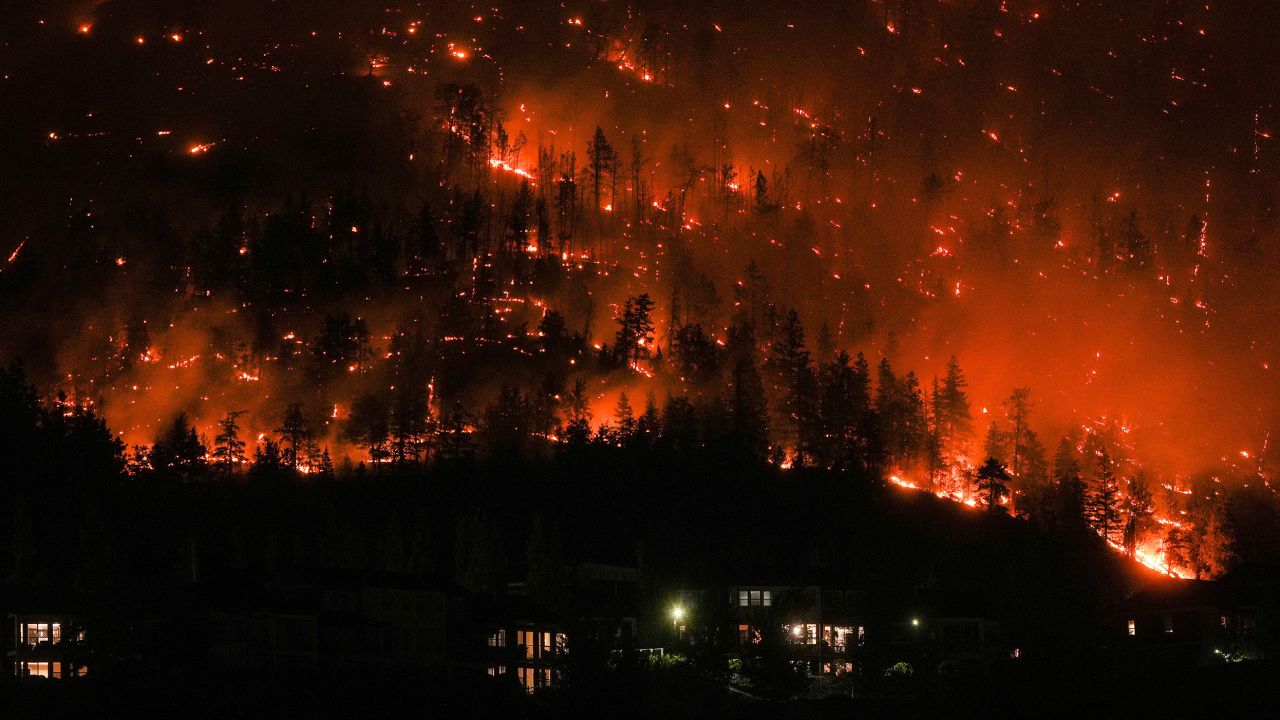A state of emergency grips Canada’s Northwest Territories as an unrelenting wave of wildfires engulfs the region. With hundreds of fires raging and the capital city, Yellowknife, under threat, the situation has prompted mass evacuations and drawn attention to the broader consequences of the crisis.
Unstoppable Wildfires Spark Emergency Evacuations
Amidst the relentless flames, emergency declarations have been issued and the evacuation of Yellowknife, the capital city, is underway. Over 20,000 residents are being urged to evacuate, escaping the path of the fast-moving fires. With more than 230 fires scorching the territory and smoke wafting southward, air quality concerns have even reached the United States.
Yellowknife holds about half of the entire territory’s population, situated north of Alberta and east of Yukon, further intensifying the urgency of the evacuation efforts.
Dire Warnings and Unprecedented Conditions
The scope of the crisis is encapsulate in Premier Caroline Cochrane’s sobering words: “We’re all tired of The phrase unprecedent, but there may be no different manner to explain this example withinside the Northwest Territories. A sentiment echo by officials and experts; the situation underscores the gravity of the challenges posed by the raging wildfires.
Evacuation orders have been issue for various areas, with the highest risk identify for communities alongside the Ingraham Trail, together with Dettah, Kam Lake, Grace Lake, and the Engle Business District. The network of N’dilo is likewise beneath Neath evacuation orders, with air evacuation being supply for the ones not able to depart via way of means of vehicle.
Perilous Escape through Smoke and Flames
The evacuation process is far from simple, as those fleeing face hazardous conditions. Drivers must navigate through heavy smoke and fire, presenting treacherous obstacles. Witnessing patches of flames and enduring limited visibility, evacuees recount harrowing journeys. Despite these challenges, authorities and residents alike are working tirelessly to ensure everyone’s safety.
Unified Efforts and Government Action
The gravity of the scenario induced rapid and complete action. Municipal Affairs Minister Shane Thompson declared an emergency for the entire territory, allowing expedited access to resources crucial for protection and evacuation efforts. The mayor of Yellowknife additionally issued a nearby kingdom of emergency because the fires approached the town.
With the fires encroaching to within 10 miles of Yellowknife, the deployment of resources, including fire retardants, is ongoing to curtail the inferno’s advance.
Impacts Beyond Borders: South Slave Region
The South Slave region has been hit hard by the fires, with the town of Hay River and surrounding areas under evacuation orders. As part of evacuation efforts, roads to Alberta and Yellowknife have been close. With rapidly changing conditions, firefighters are repositioning, and communities are mobilizing to confront the danger.
Environmental Impact Reaches the United States
The repercussions of the wildfires extend beyond Canada’s borders. Smoke from the fires has led to harmful air quality, affecting regions across central Canada and even reaching the United States. Minnesota, in particular, issued air quality alerts as smoke from the fires reached the state, urging sensitive groups to limit outdoor activities.
International Response and Solidarity
In response to the escalating crisis, Canadian Armed Forces have been mobilize to aid firefighting efforts, provide airlift resources, and offer logistical support. The Prime Minister of Canada, Justin Trudeau, emphasized the government’s commitment to supporting the affected areas and careworn that there might be no tolerance for rate escalation of crucial goods.
Conclusion
As unprecedented wildfires ravage the Northwest Territories of Canada, communities, governments, and nations are coming together to address the crisis. The relentless flames, evacuation efforts, environmental consequences, and international impact underline the urgent need for coordinated action and vigilance in the face of these devastating wildfires.



